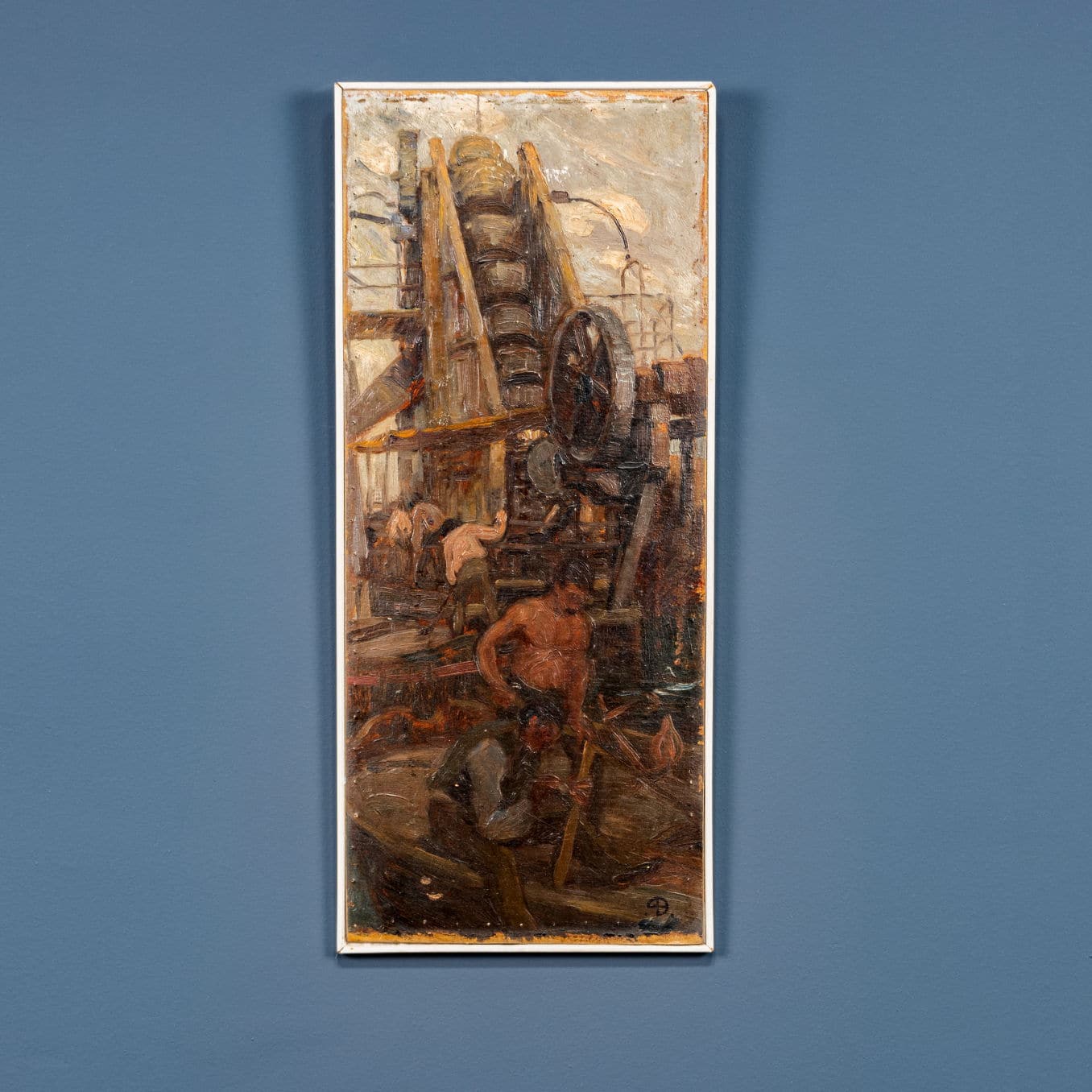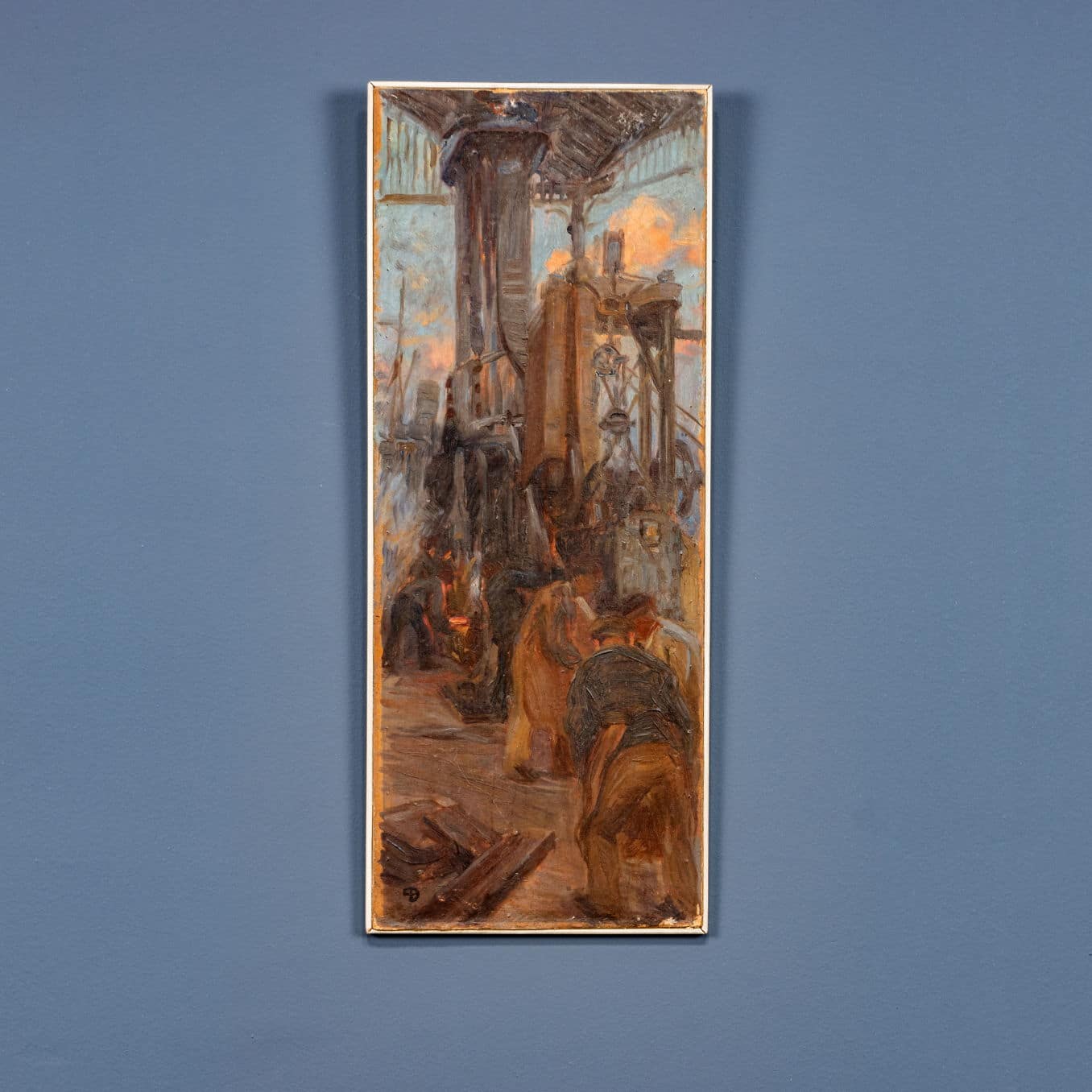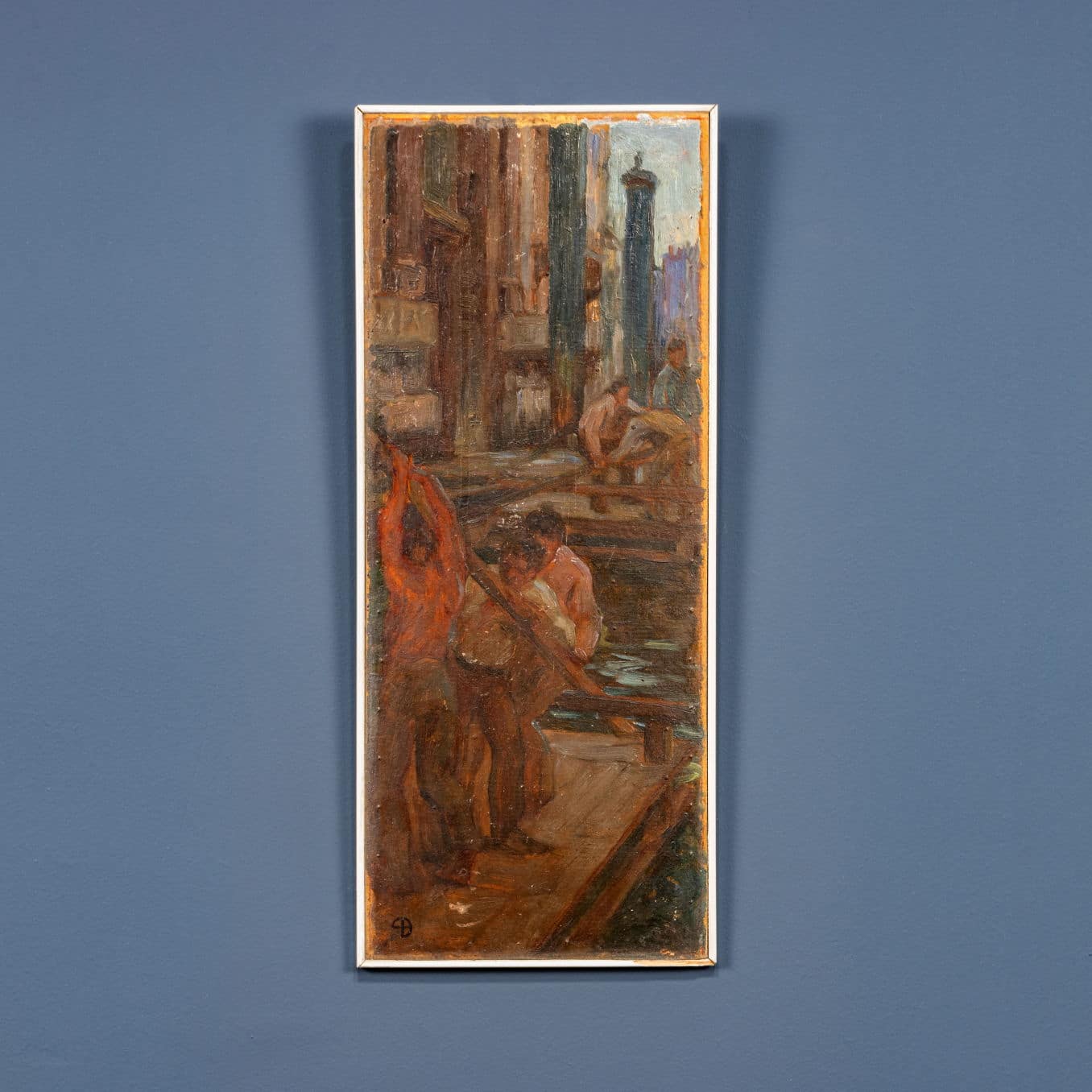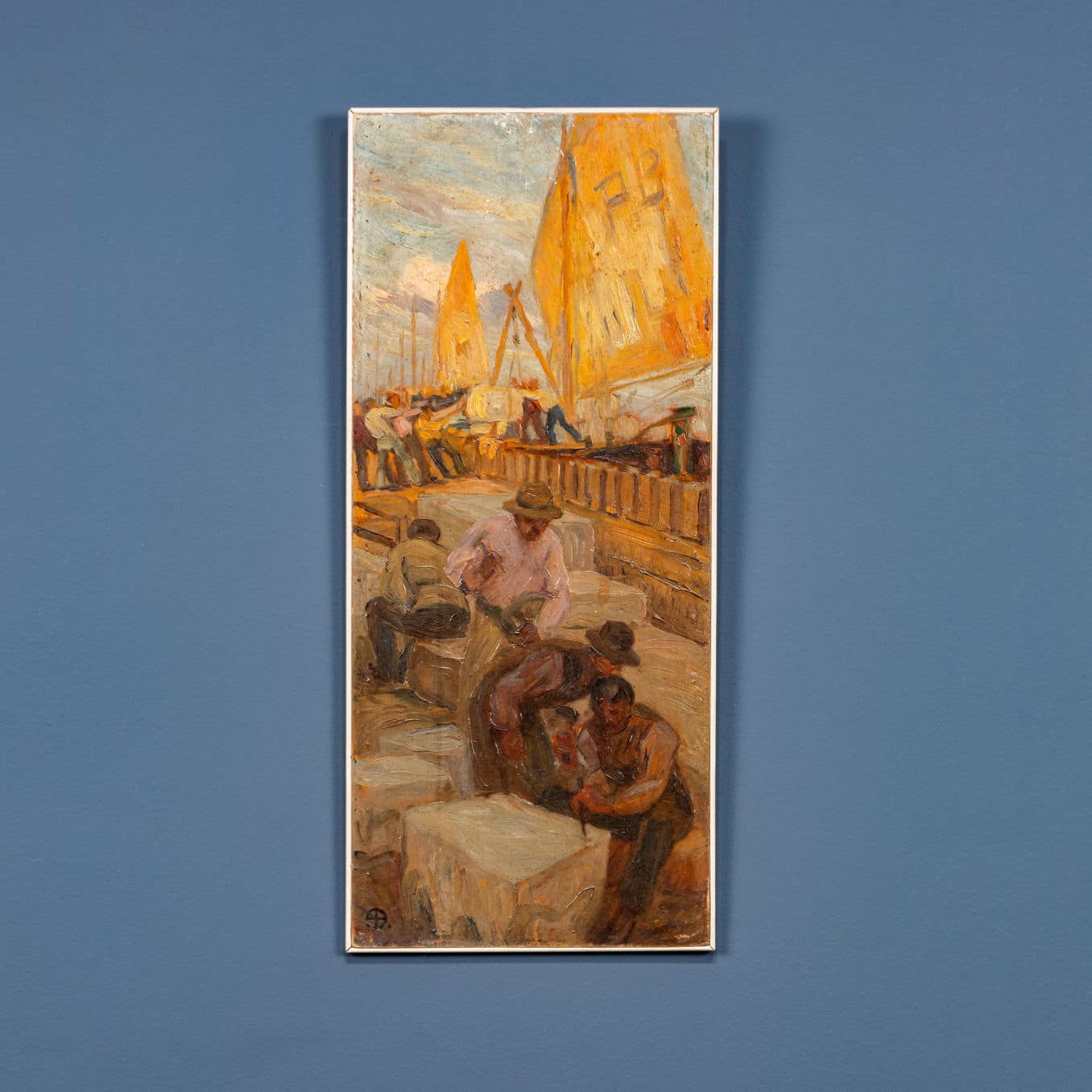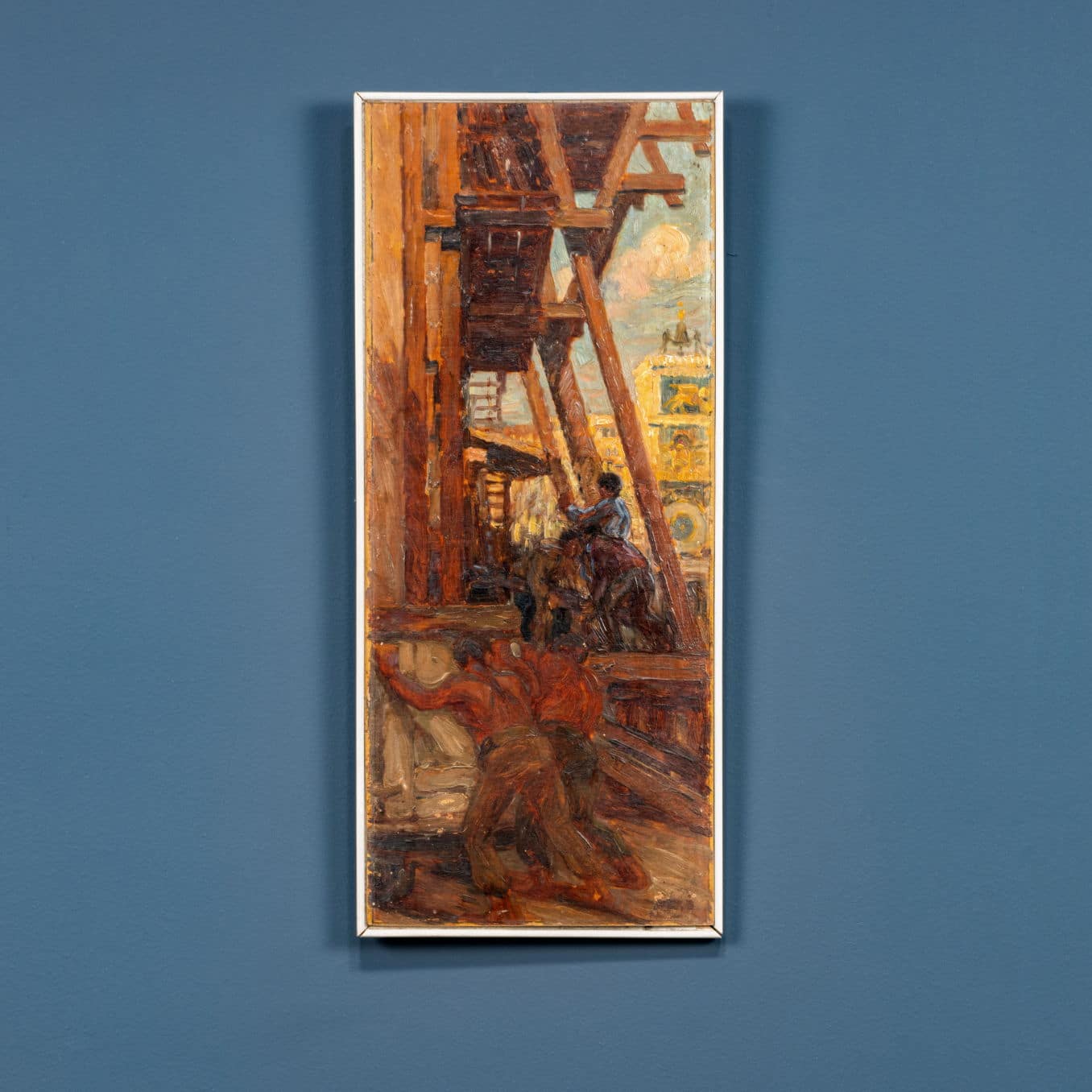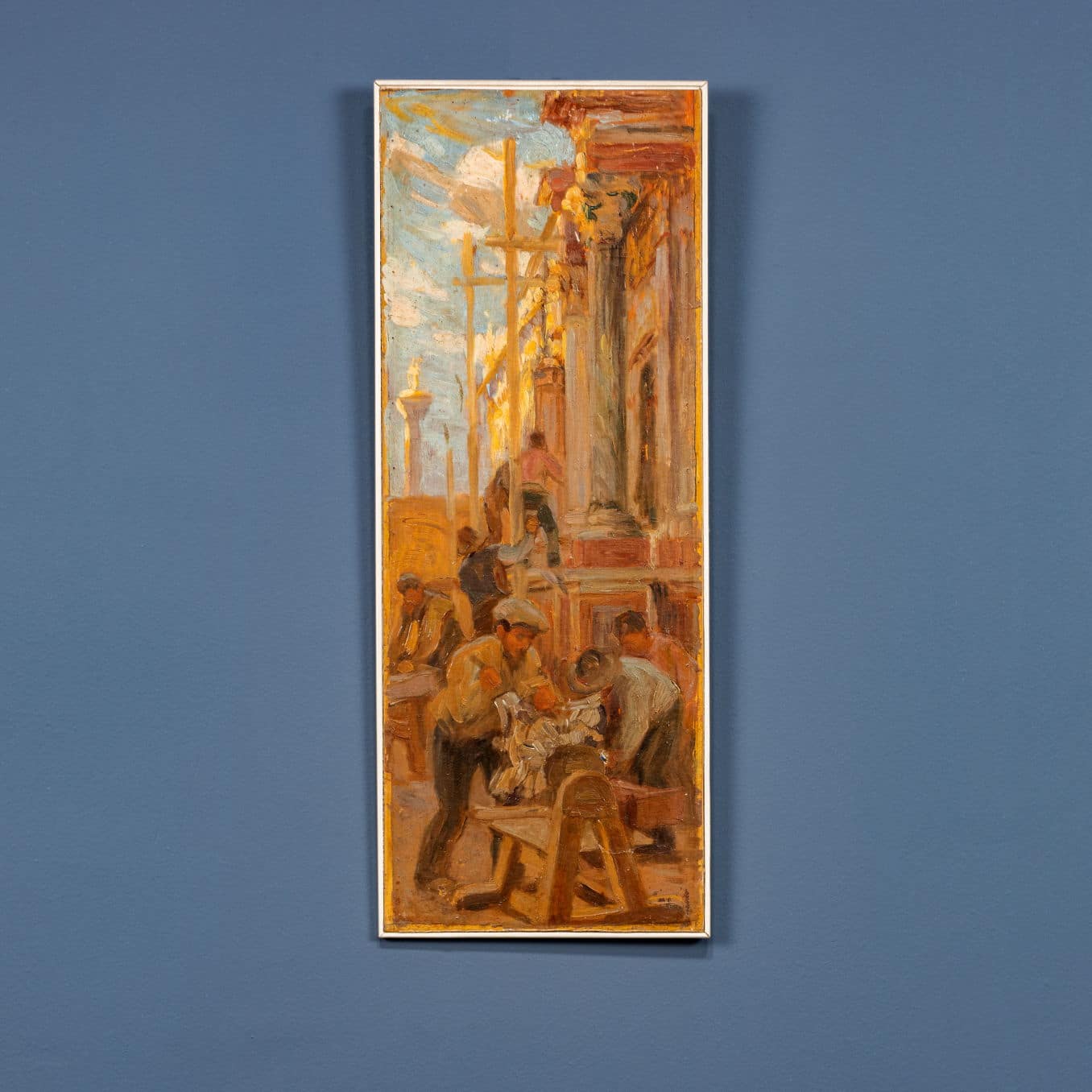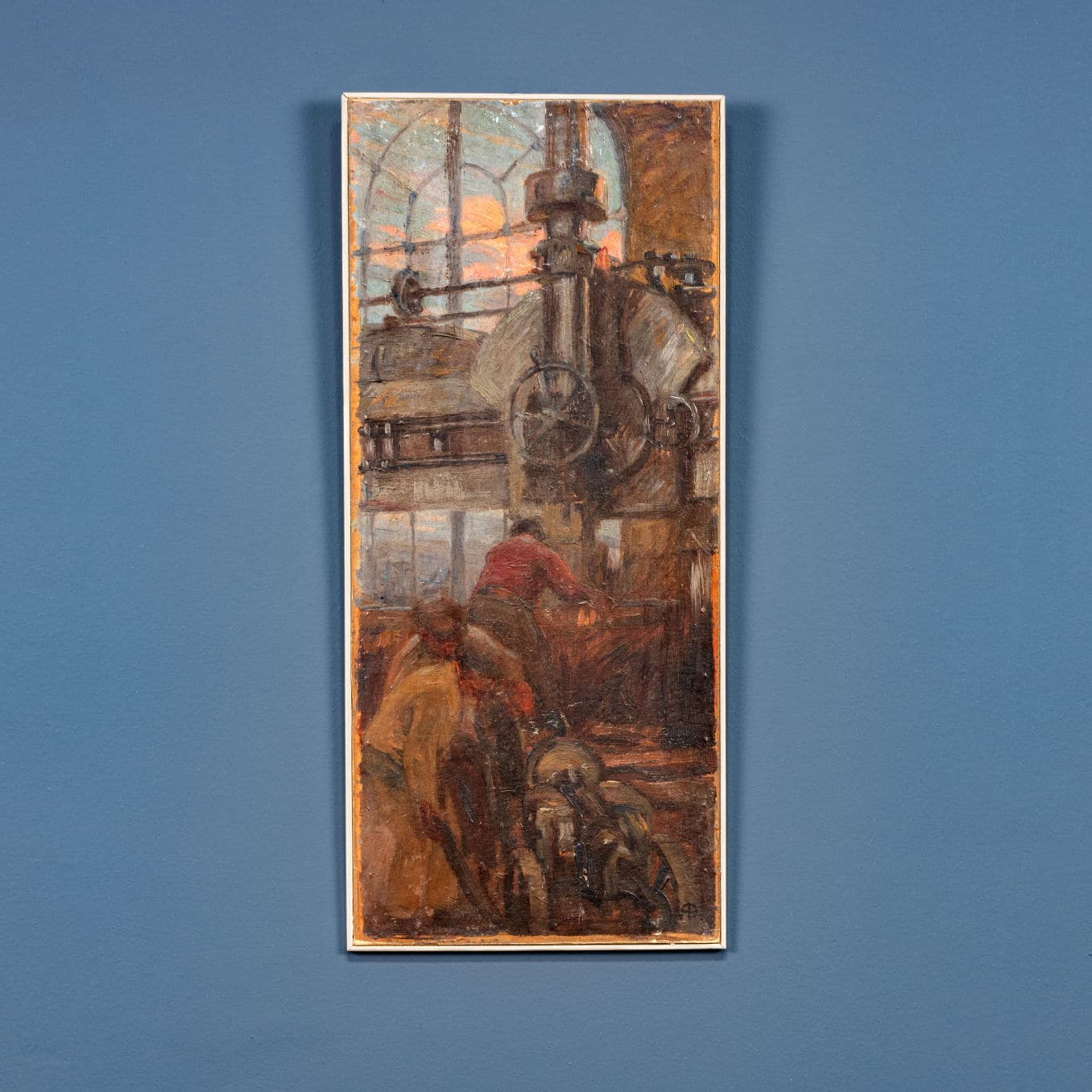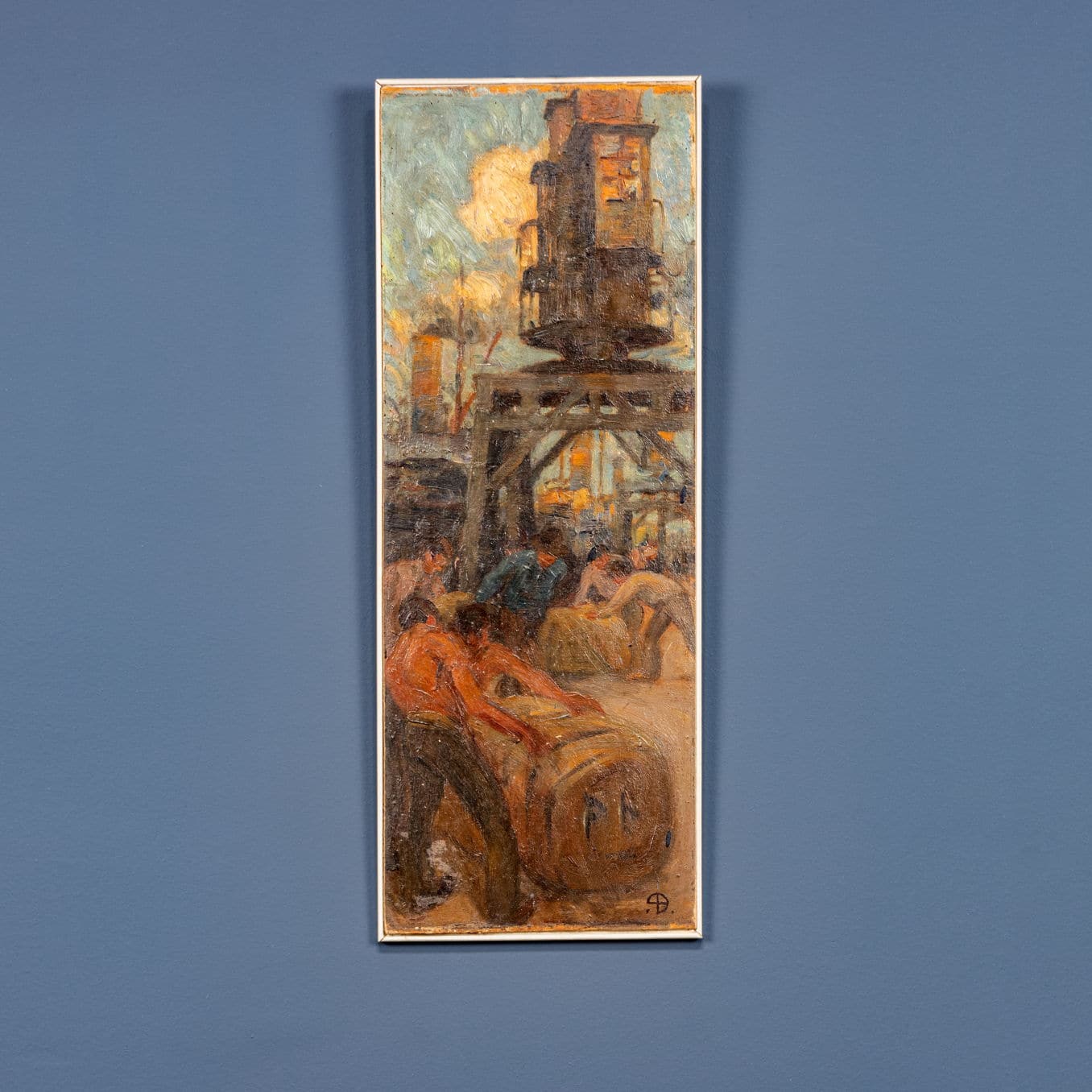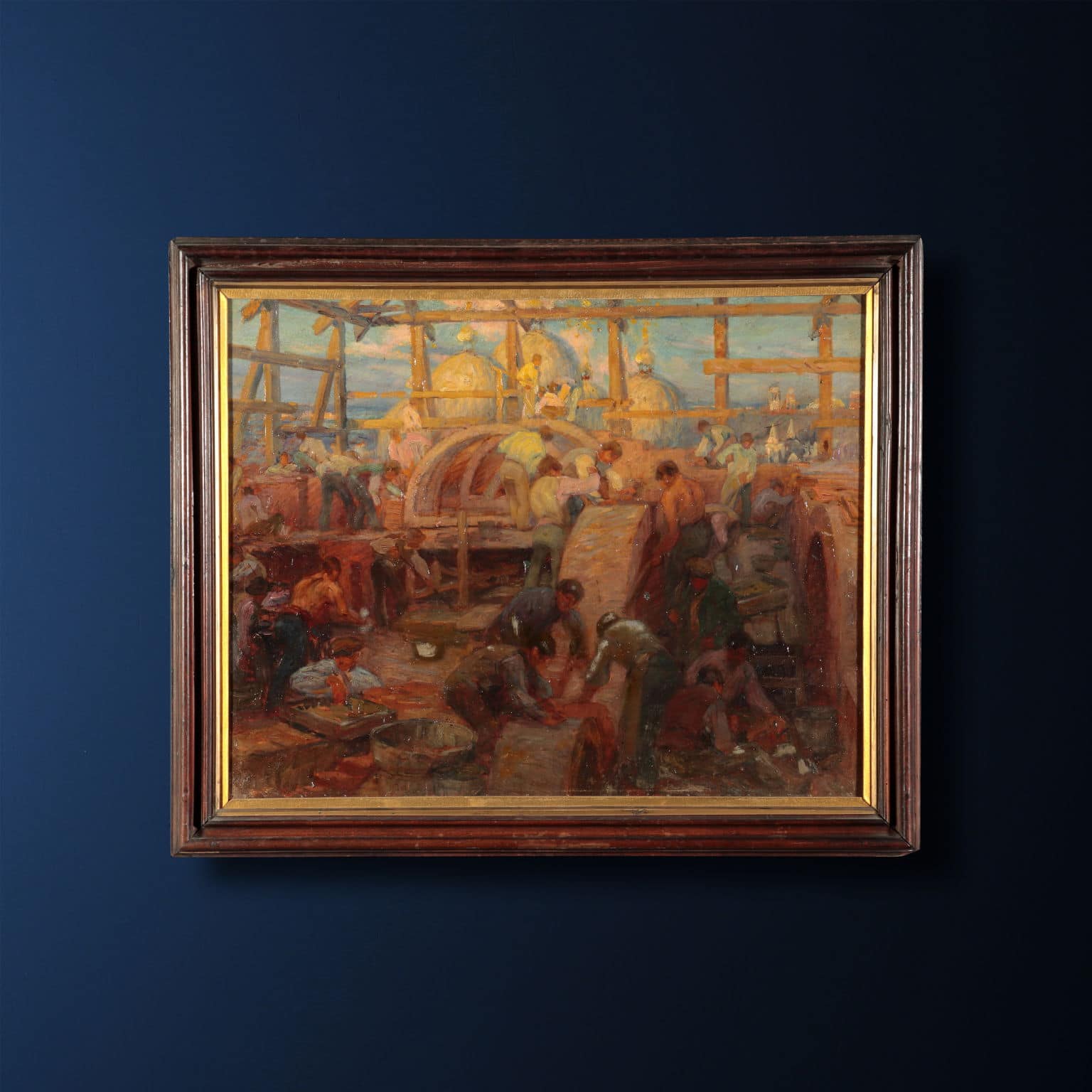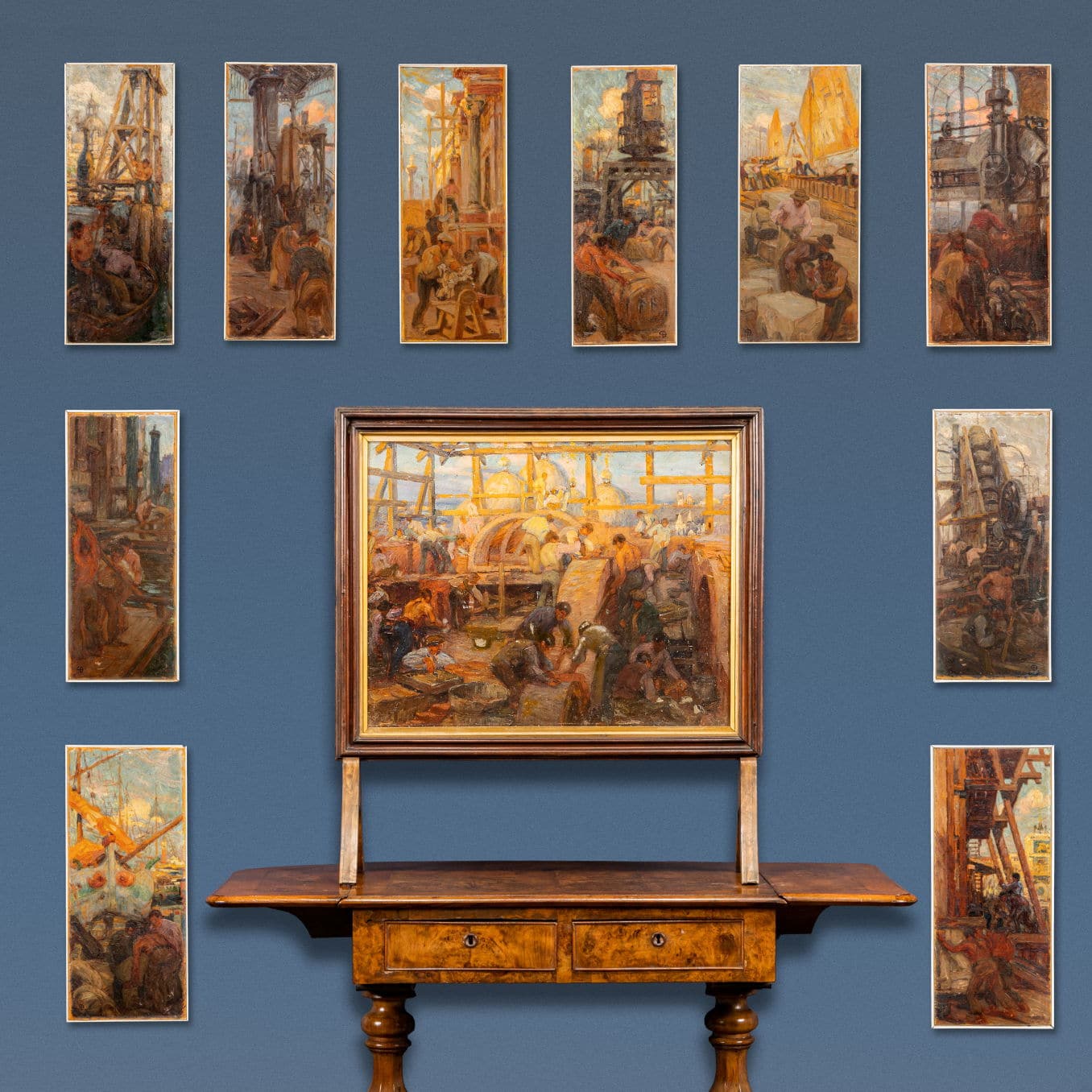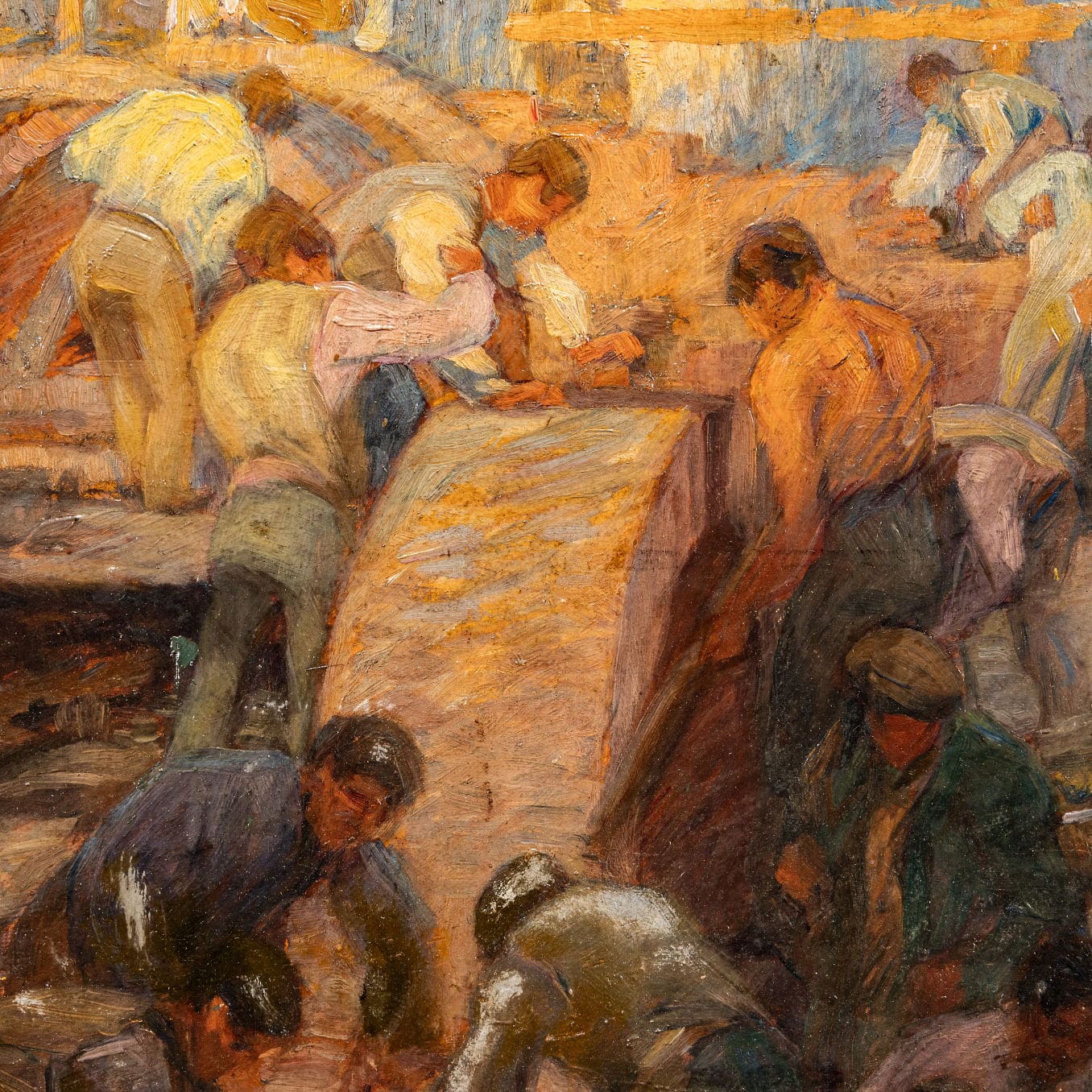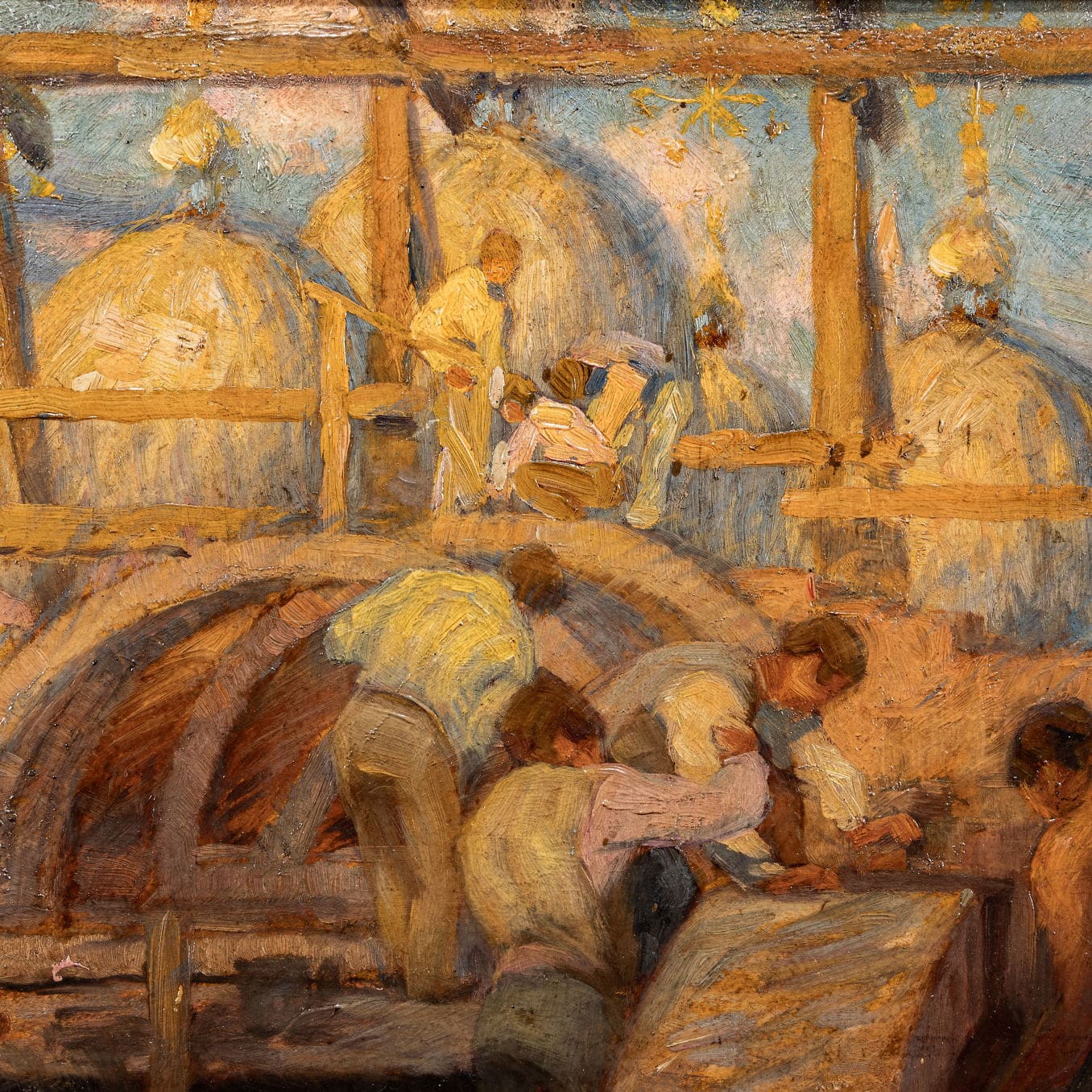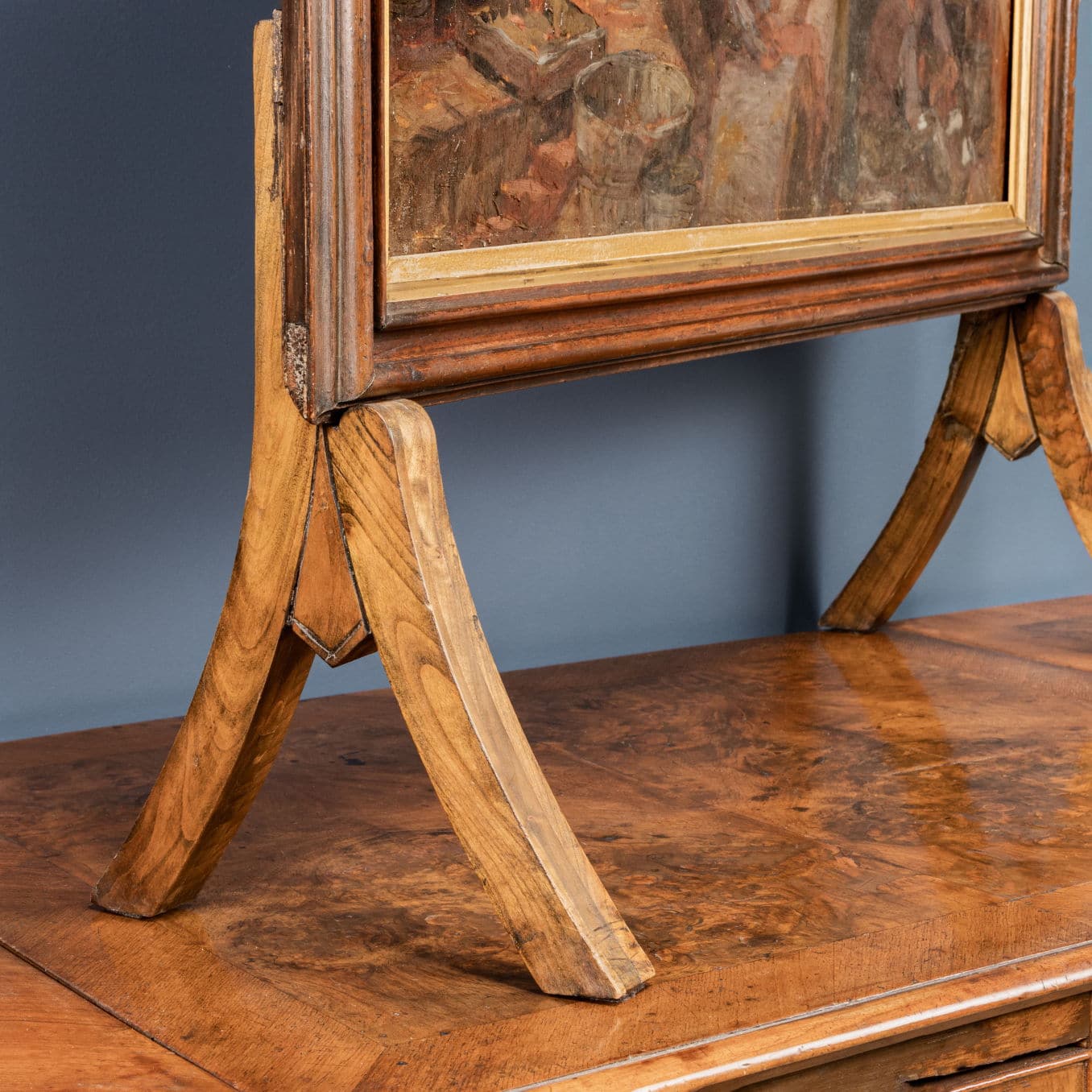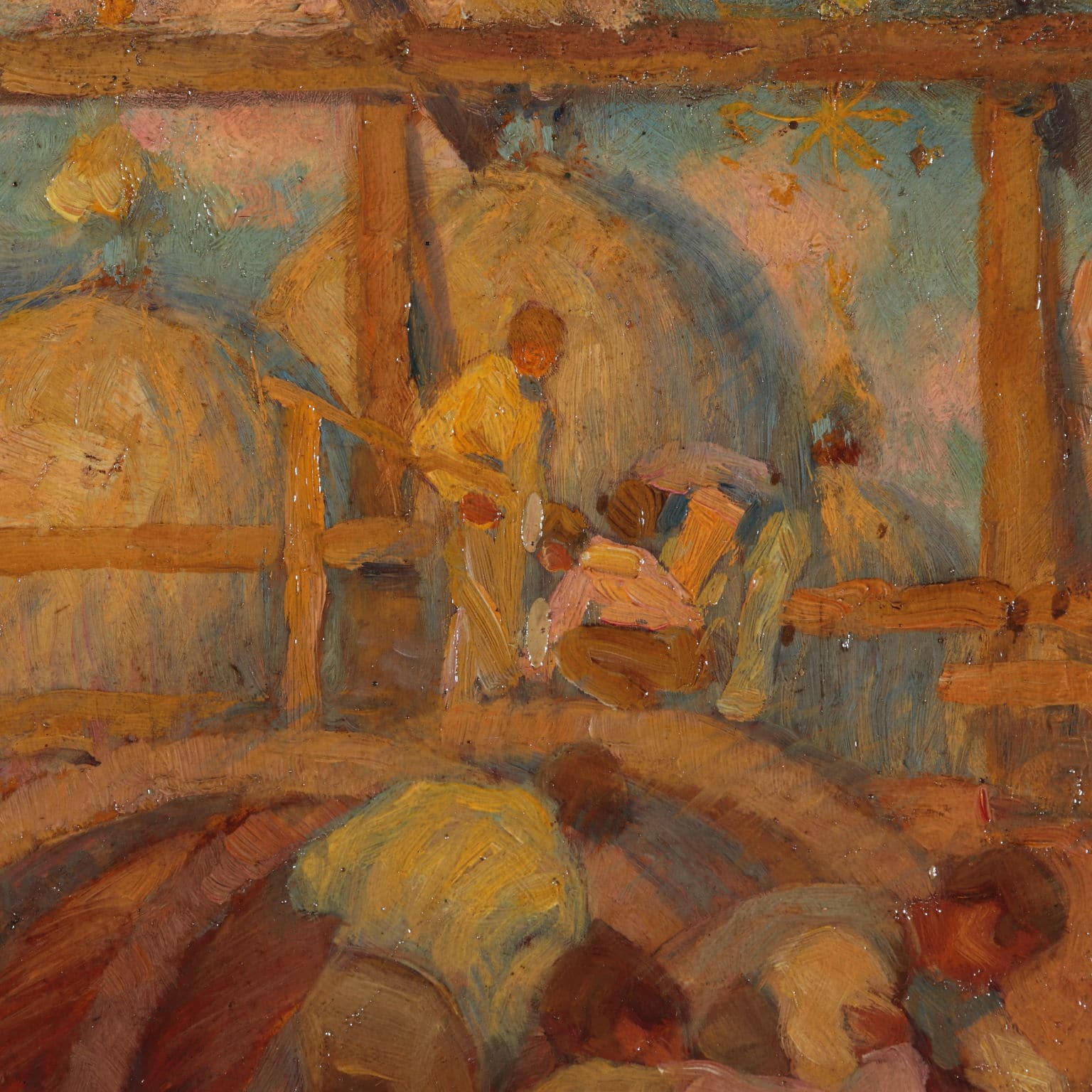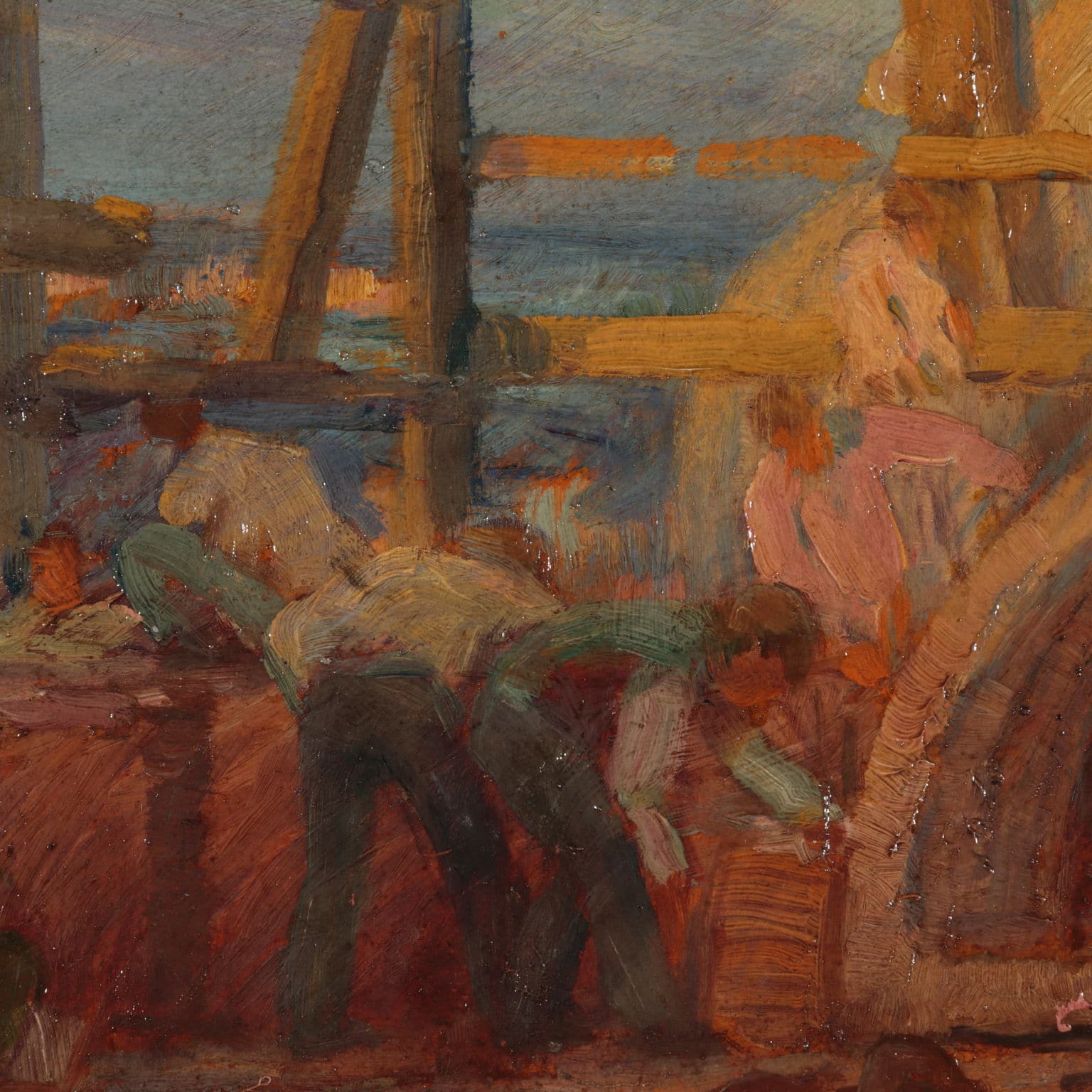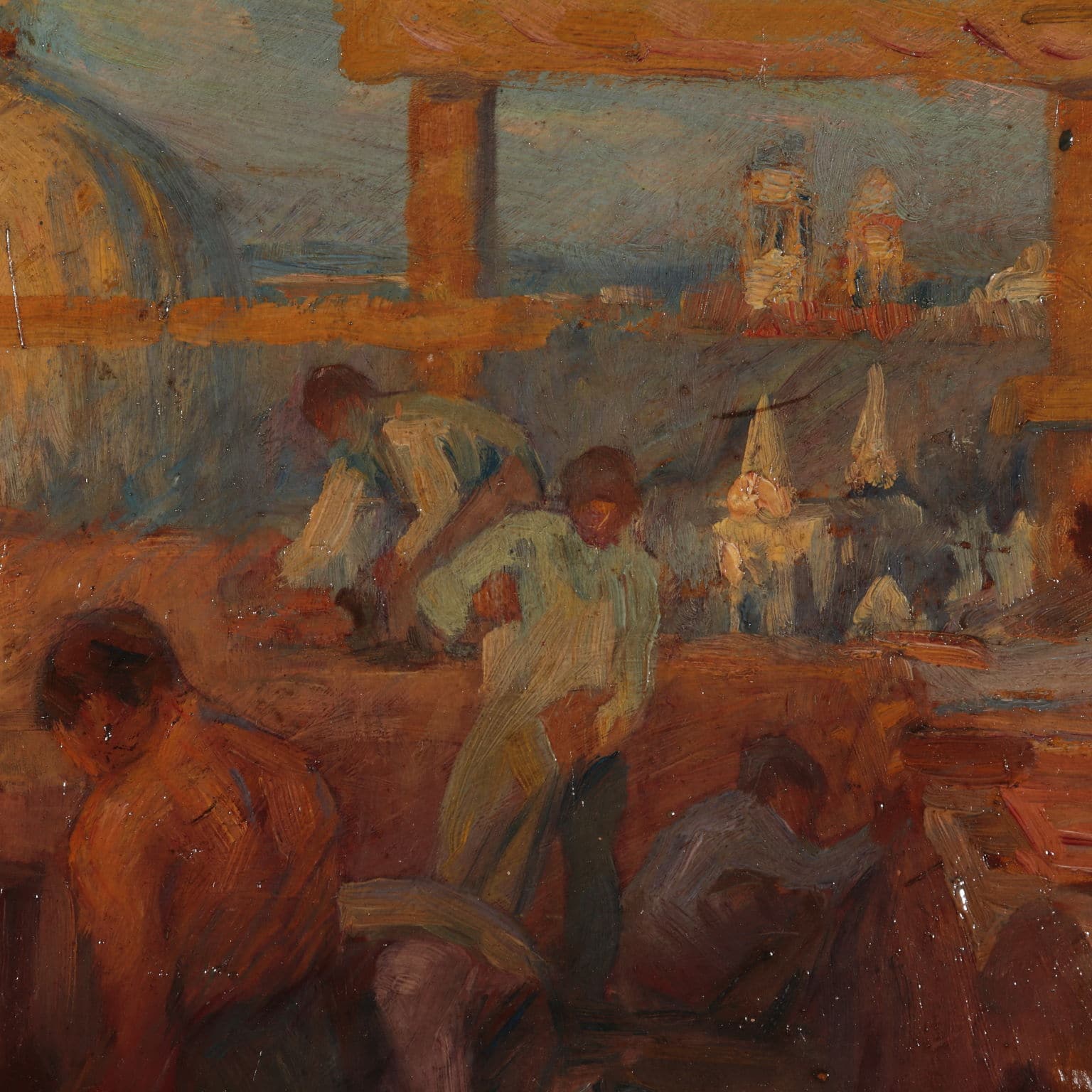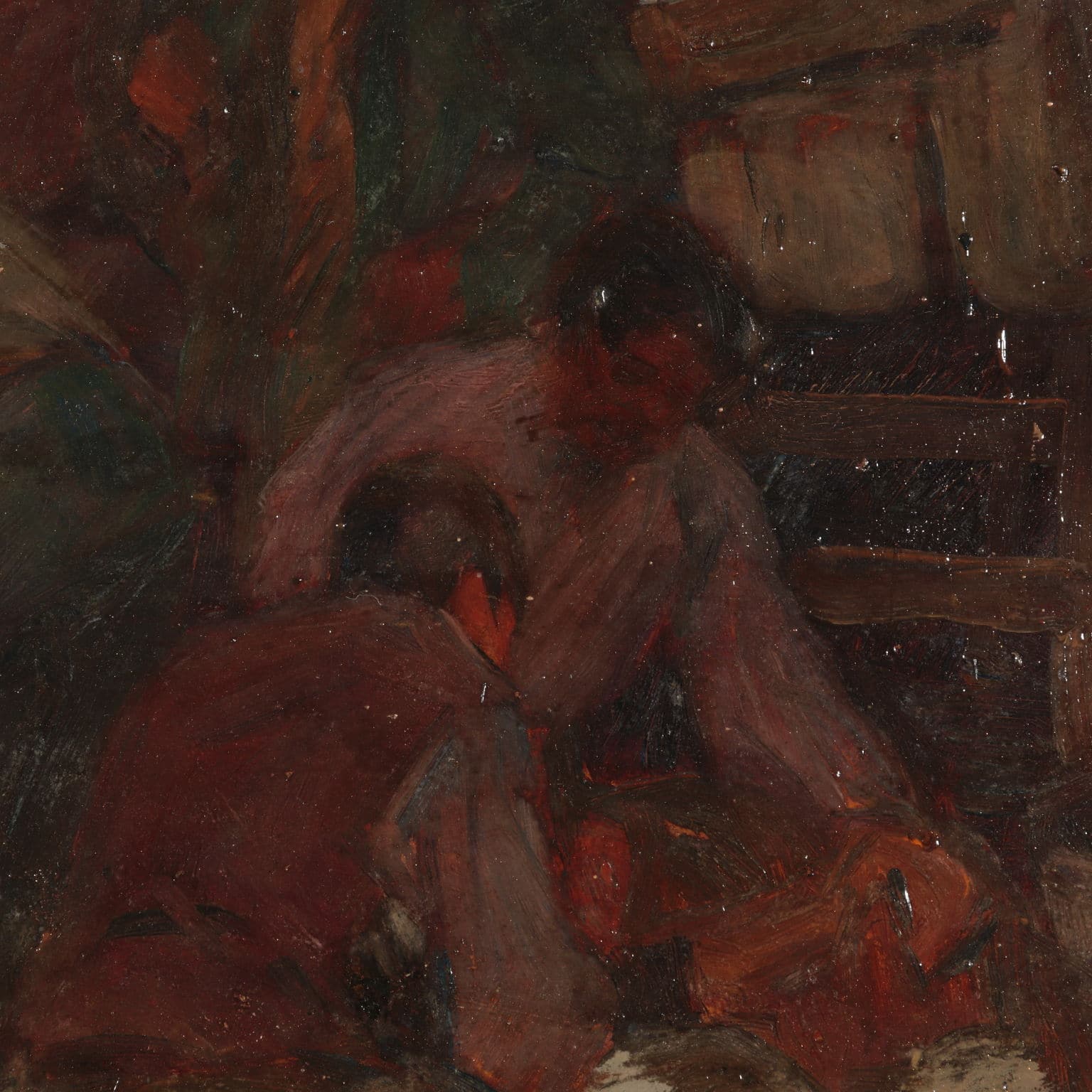Pieretto Bianco – The awakening of Venice, series of paintings for the 1912 Venice Biennale
Pieretto Bianco (Trieste 1875 - Bologna 1937)
Oil on cardboard
Description:
The extraordinary series of eleven paintings, hitherto unpublished, concerns the realization of the decorative cycle The Awakening of Venice that Pieretto Bianco created for the central hall of the Venice Biennale in 1912. It was divided into four sections: The Founders, The Constructors, L ‘Arsenale and Il Porto. The definitive panels were largely donated by the heirs to the then Municipality of Puos d’Alpago (no longer autonomous since 2016 but a fraction of the Municipality of Alpago), the town of origin of the painter’s family and whose municipal premises are still today some of the 14 large canvases are exhibited. The cycle consists of 11 cartons, of which 10 of similar format with a vertical orientation of the support and one of larger dimensions and horizontal format.
CODE:
ARTNOV0001777, ARTNOV0001778
The Founders
The Builders
The Arsenal
The Port
Historical-critical analysis:
The paintings are the preparatory works that the Trieste painter submitted for the approval of the organizers of the 10th Venice Biennale, obtaining a favorable opinion.
It is not, therefore, a simple collection of monographic works (which would be exceptional in itself), but an important work that allows us to point out the development of a famous, albeit poorly documented, artist. In 1912 Bianco was a man matured on the experience of the international art of the Biennials, as well as the counterpoint of Ca ‘Pesaro, therefore close to artists of the so-called School of Burano such as Gino Rossi, Arturo Martini, Ugo Valeri and especially Umberto Moggioli, with whom shared the studio in 1909-1910. It also seems to hear echoes of Italian painters such as Zanetti Zilla, Guido Marussig and Galileo Chini, foreign painters such as Frank Brangwyn, or others of the new generation in the limelight in Venice of the early twentieth century, in which colors and shapes were accentuated to become lyrical and emotional notes. , in complete harmony with the most up-to-date painting in the European capitals of that era.
Without the rhetorical forcing of heroic fascism, still far away, the configurations in these cartoons enhance the modern image of the working man. After the physical and moral breakdown in “social” painting of the nineties, and in the confidence in industrial progress also felt by the Futurists, in the new century this man emerges strong and energetic. The cycle is permeated by an atmosphere of great expectations, the same that can be felt in the Michelangelo figures of De Carolis and also in Boccioni’s hymn to the modern city. In short, the modern age is welcomed with enthusiasm: the accentuated contours of Bianco’s figures reflect the new spirit of vigor and energy.
Pieretto Bianco’s particular project is set in a celebratory atmosphere of the lagoon city, noticeable in Venice in the early twentieth century, in which various artists participated, interested in its conservation and promotion such as, for example, the reconstruction of the bell tower of San Marco, fallen on July 14, 1902, and proudly rebuilt by 1912. It is not known how the idea of this grandiose initiative by Bianco was born, which was carried out in the grand hall of the Palazzo delle Belle Arti in the Giardini Pubblici in Venice. In 1901 Antonio Fradeletto, Secretary of the Biennale, had introduced decoration as an autonomous artistic genre and Bianco was certainly aware of the international exhibitions in Stockholm and Brussels, where great decoration was in evidence. The choice of the theme, then, underlines the return to Renaissance classicism revealed in the contemporary work of De Carolis, Sartorio, Bistolfi, Chini and Nomellini. Furthermore, at the great Roman exhibition of 1911, which among other things included many foreign artists, Ettore Tito presented La Gloria di Venezia. Finally, in the same year, the International Exhibition of Industries and Work was set up in Turin. In this historical context, therefore, we find the appropriate placement of Pieretto Bianco’s important project.
Artist biography:
In the Pietro Bortoluzzi registry office, the artist decided in 1898 to change his name so as not to be confused with the homonymous Millo Bortoluzzi, also a painter. Trained at the Venice Academy, he initially worked in Burano with Umberto Veruda and then made his debut in Milan in 1894, where he completed his artistic education specializing in both portrait and landscape, preferring the representation of lagoon islands and poor suburbs and demonstrating a particular sensitivity to landscape and human expressions. Later he instead dealt with wall decoration with its broad and rhetorical forms. In these years, Bianco also participated in numerous art exhibitions in the most important Italian cities, also managing to achieve international success, so much so that from 1916 to 1920 he moved to New York as a set designer for the Metropolitan Opera House. Back in Italy, he divided his work between the continuous commissions (including the sets for the Opera di Roma and the Scala di Milano) and teaching: he became a teacher first at the Royal Institute of Fine Arts in Parma then at the ‘Roman Academy. He died suddenly in 1937, due to an injury while I was organizing his big solo show in Genoa.
Bibliography:
– X. International Art Exhibition of the City of Venice, Venice, Ferrari, 1912
– Luigi Coletti, L’ arte italiana alla decima Esposizione internazionale di Venezia, in Vita d’arte: rivista mensile d’arte antica e moderna, V.1912, 58, pp. 111-148.
– L’illustrazione italiana, Milano, Treves, 1912.
– Pieretto Bianco e il risveglio di Venezia: ciclo decorativo per la X Biennale 1912, catalogo della mostra (Museo Storico Navale, Venezia 2004) a cura di Rita Bernini, Belluno, Provincia di Belluno Editore, 2004.
- Pieretto Bianco - The awakening of Venice, series of paintings for the 1912 Venice Biennale

Antiques, Art and Design
FineArt is the new ambitious Di Mano in Mano project that offers an exclusive choice of antiques and design works, presenting them for their singularity and uniqueness.

